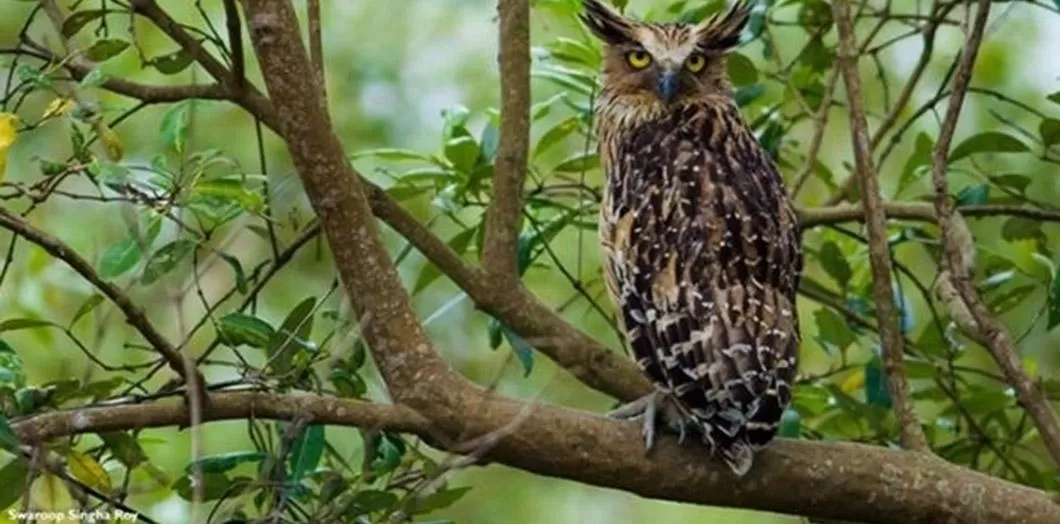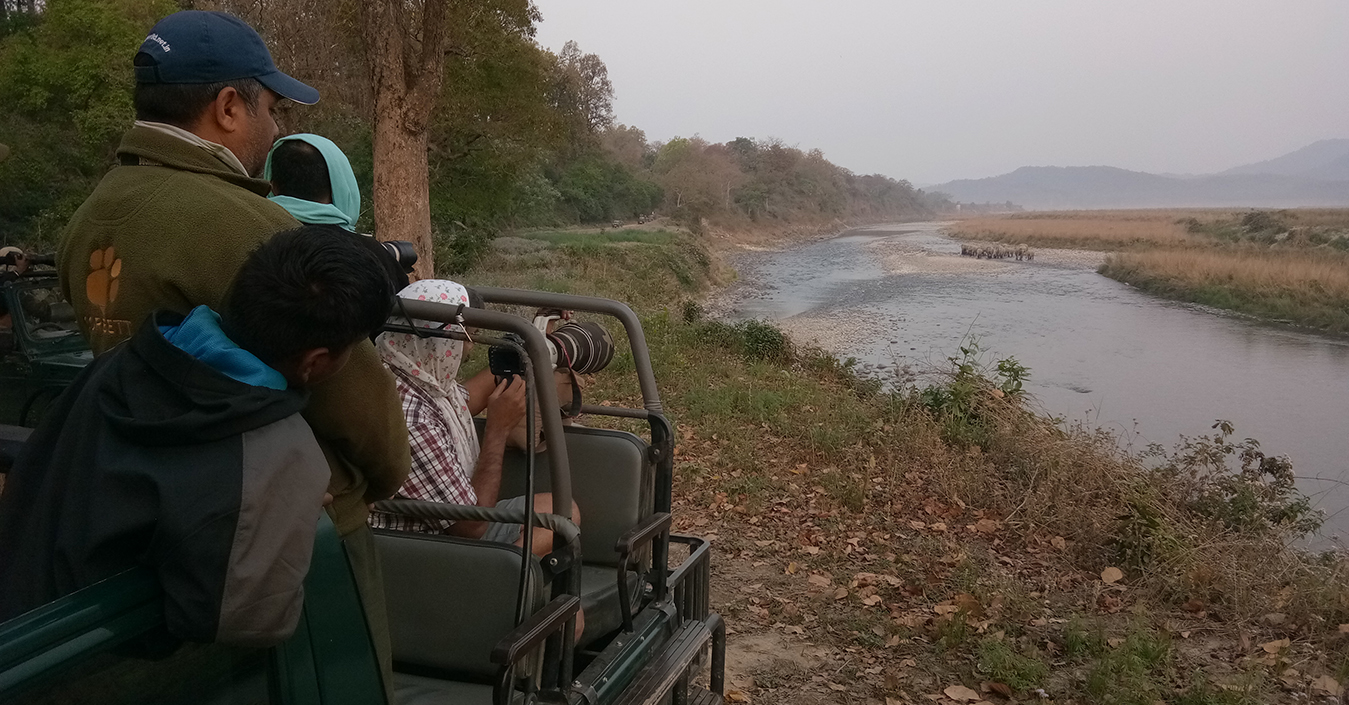
Blog Details
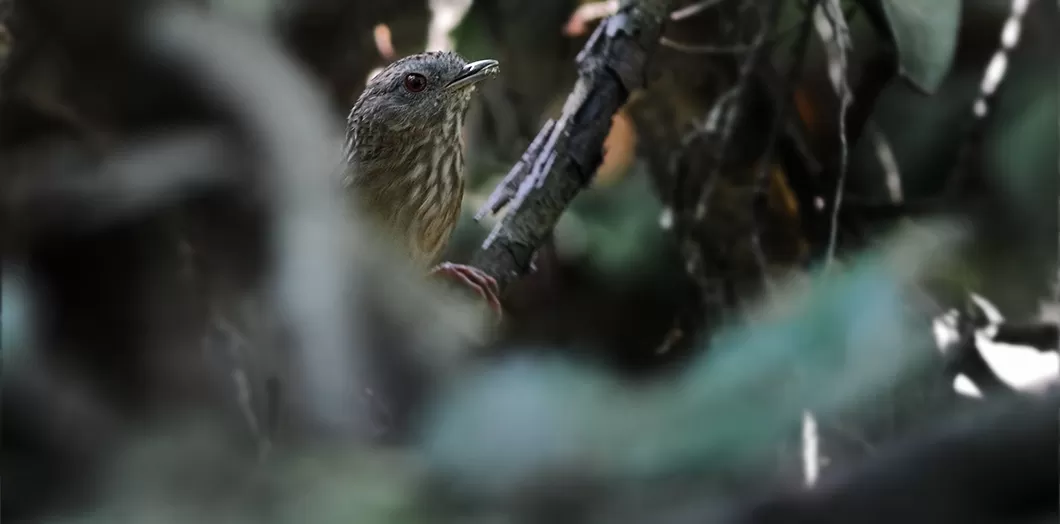
Bird watching and information on Dehing Patkai Wildlife Sanctuary
The pristine rain forest of this kind in is very unique and the uniqueness lies in the four layers of the forest of Dehing Patkai. To understand the birds of this upper Assam forest bird watchers or photographers should understand the habitat of the birds of this forest first. The habitat is one of its kinds so are the birds of this sanctuary.
Now we shall try to understand the forest and the trees:
If you are coming for the first time in this forest of Assam, you will see Primary Emergent Layer of trees such as the giant Hollock, Hollong, Dhuna, Elephant Apple etc. Most dominant species of the emergent layer is Hollong tree, this is also the state tree of Assam.
The Secondary Layer is mid-height woodland species forming the continuous canopy below the emergent layer roughly at 60 ft. It is important to note that, primary emergent layer is not densely packed, but secondary canopy layer is so tightly packed, that there are hardly any gaps in between the trees and that is why the humidity and the warmth remains trapped within the forest itself. These forests of North East India are generally very dark as hardly any light can penetrate through the thick covers formed by the densely packed trees. This area is pretty ideal for many bird species that prefer to reside in this part of the forest.
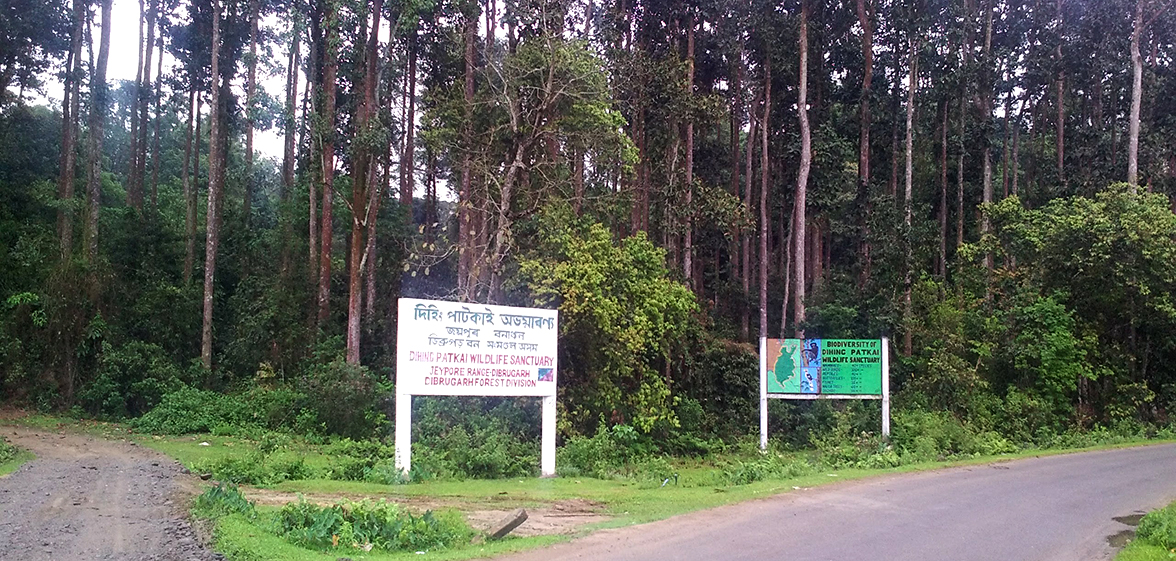
From the above image take a look how external landscape of this rainforest is formed. Taller trees defining Primary Emergent layer, dense canopy formation by secondary layer.
Tertiary and Quaternary Layers are the small plants and shrubs which are of small height and form the understory or the forest floor respectively of this forest. These two last layers receive the least amount of sunlight and consist of mostly younger canopy layer trees like shrubs, herbs, bush thickets, etc. Forest floor which is the last layer consists of dry and rotten leaves which have deposited over time along with organic matters which have decayed over time and become the compost required to provide nourishment to the forest. A good pair of binoculars or good noise performance cameras are required to get good quality bird photos in this forest.
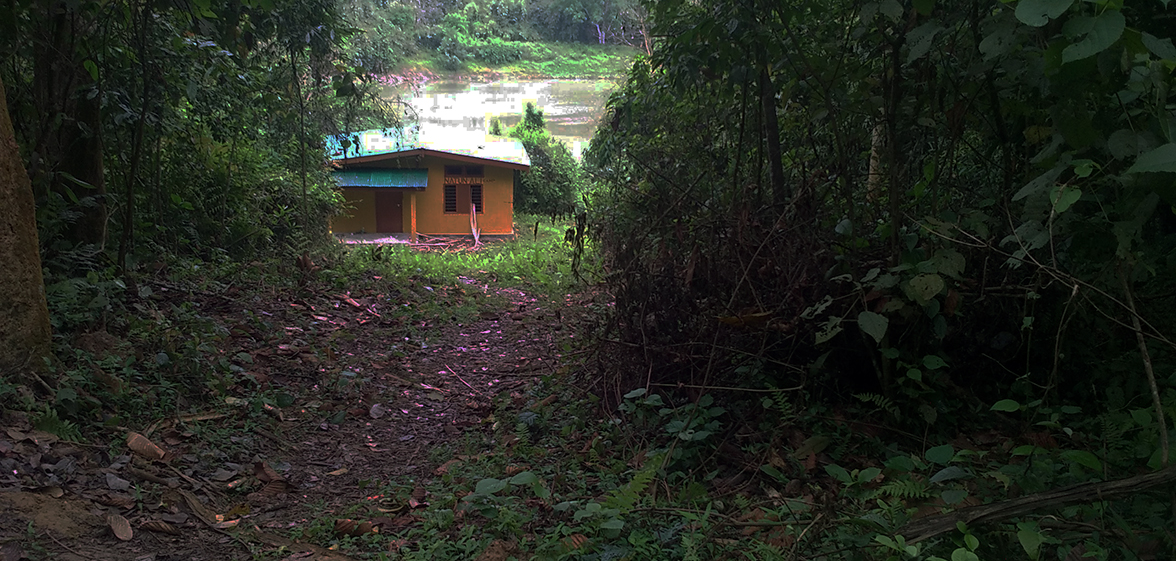 The image above shows tertiary and quarternary layers.
The image above shows tertiary and quarternary layers.
Let us now talk about the residents of the forest:
Bigger Mammals like Hoolock Gibbons, Langurs and Macaques prefer to roam around in the emergent layer as well as canopy layer. Brown Hornbill, which is one of the star bird of Dehing Patkai, a forest from Jeypore division, prefers both emergent layer and canopy layer. Most of the time, if spotted correctly and if proper distance is maintained then the bigger inhabitants of the forests in North East India give enough opportunity to photograph them. Species which dwell mainly in the emergent layer like Gibbons or Hornbills are star species to be photographed along with other Birds of North East India which cannot be missed. Take a look at the rarest of all Hornbills, shot from far distance - Brown Hornbill (image below).
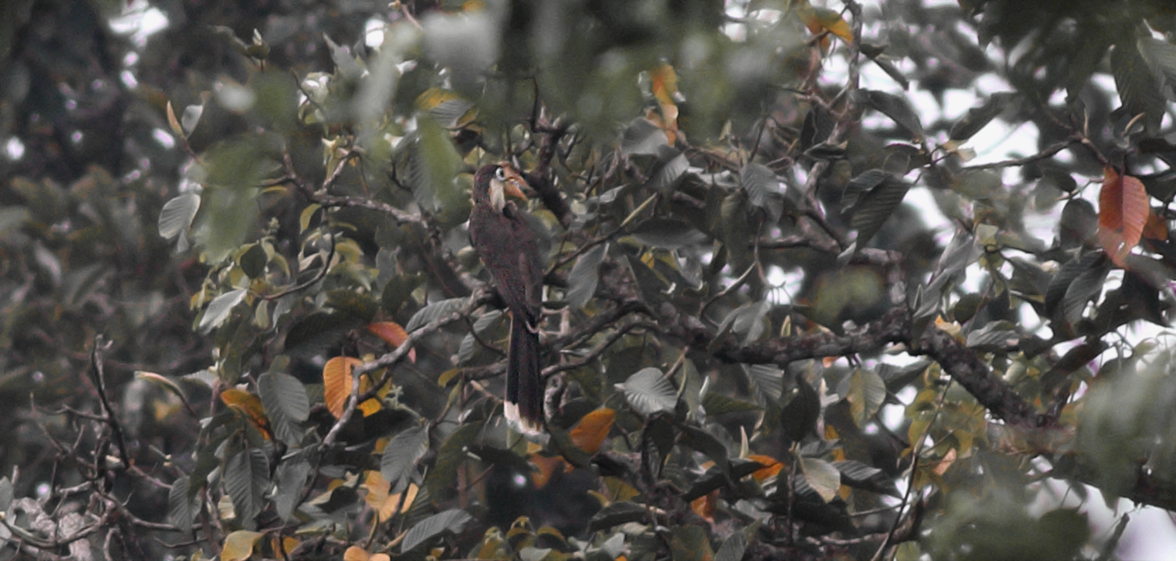
Most of the birds which are passerine such as warblers, Shrike-babblers, Yuhinas, Minlas prefer canopy layer; when they move in mixed flock. Finding these species is not cake walk since these birds tend to hide mostly in the deeper parts of these forests but our expert naturalist and ace birding guide is capable of finding these beauties even from the remotest of corners of the forests. He can do so owing to his years of experience, his excellent understanding of the forests of North East India and the inhabitants of these deep dark woods. It is not easy to photograph canopy level birds, but as stated earlier our ace naturalist will use his expertise so as to ensure that you can make the most of your tour with us and have the best time, photographing rare beauties of these forests.
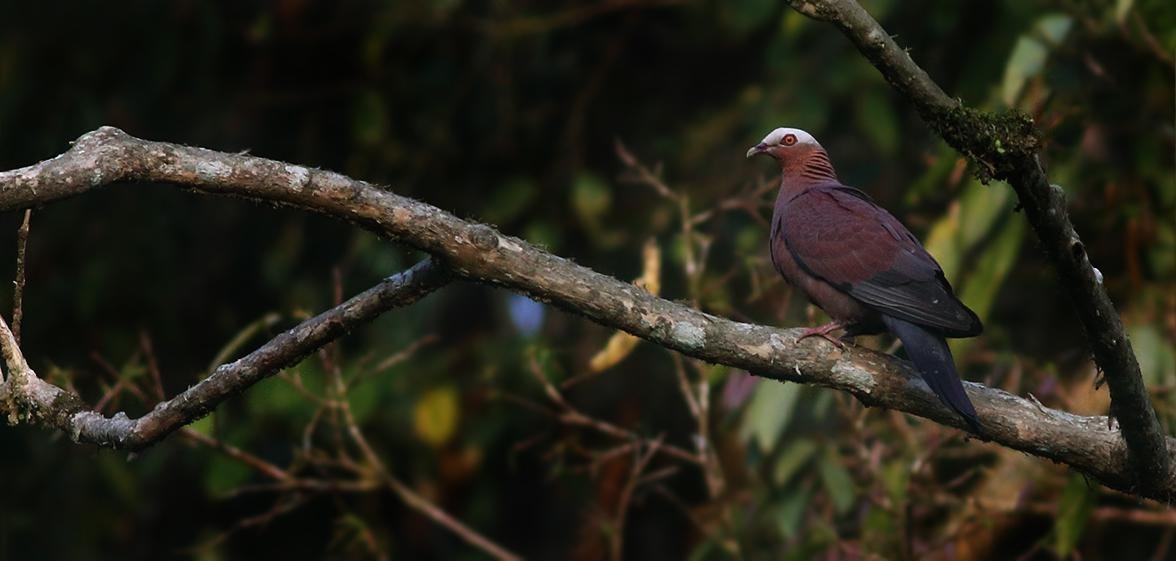
Pale-capped Pigeon (image above) is a globally threatened species and is sparsely distributed in foothills of North East India ( a meagre number of this species is found in the state of Orisha). This is no doubt a magnificent gem as far as birding in North East India is concerned.
Activities of birds such as Large Scimitar Babbler and White-hooded Babblers are restricted to mostly bush thickets and shrubs since that is their preferable area for foraging. These species of exotic birds seldom come out in the open hence photographing them is a pretty hectic job. One more reason being the poor light in the forests of North East India so photographers have to use higher ISO setting in this forest to photograph these elusive species birds. Assistance and guidance for camera settings and adjustments shall be provided by our expert birder, all sorts of support and help shall be extended so no need to worry at all.
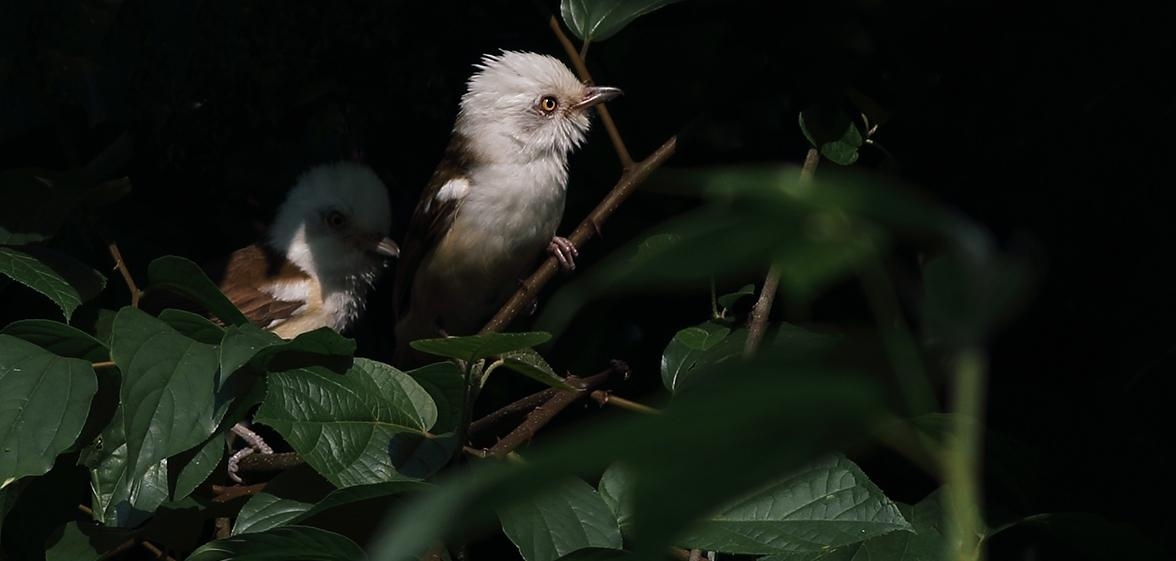
Best places for sighting of White-hooded Babbler are Dehing Patkai Rain Forest in Assam, lower altitude forests of Eaglenest WLS & Mehao WLS, Kamlang-Namdapha complex in Arunachal Pradesh. It is be one of the target species in Dehing Patkai.
The main target will be to understand the foraging pattern of the birds, where the birds will perch next etc. and for the record... if these pointers and instructions are properly followed; you will be able to get nice sighting opportunities of these exotic birds at Dehing Patkai and for longer duration. In Jeypore, Rufous-throated Fulvetta resides in understories and it is pretty fidgety species. While photographing this species the participants must be very quiet and must follow the instructions provided by the mentor as this is one of the skittish species. Tesias and Wren Babblers, which are the tiniest among all Indian birds, prefer to forage in the forest floor and bush thickets of these forests of North East India. These are the species, which almost entirely dwell in the darkest and shadowy parts of the forest. Streaked Wren Babbler is very much range restricted species from this rain forest. Though this set of birds are the most challenging ones to get, our tour mentor will put in maximum effort to ensure lovely sightings of these species too so that the participants can click nice images of these beauties.
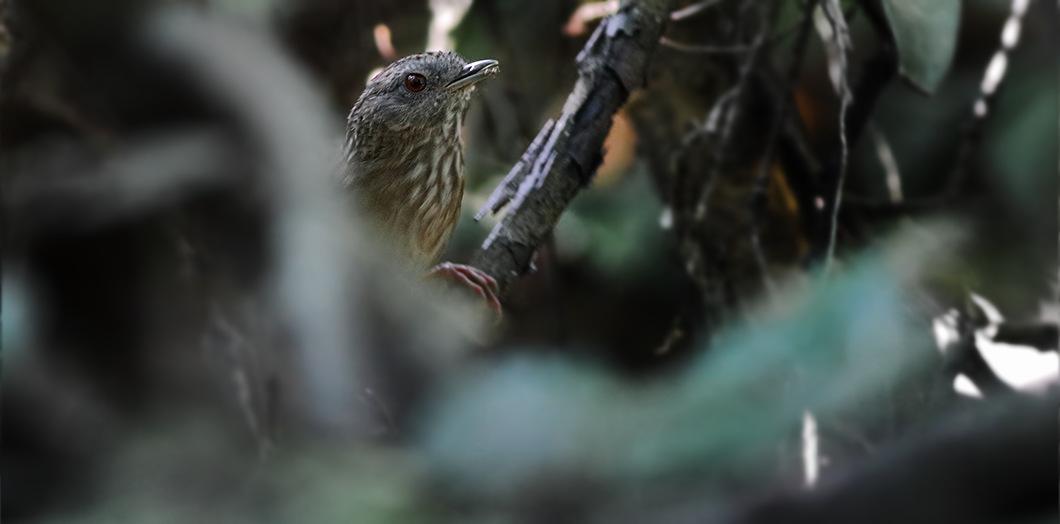
Streaked Wren Babbler (image above) is a real skulker and it is difficult to find out, unless you are in proper location. However, spent around 15 minutes of quality time with this species. Check the recorded call also XC472462
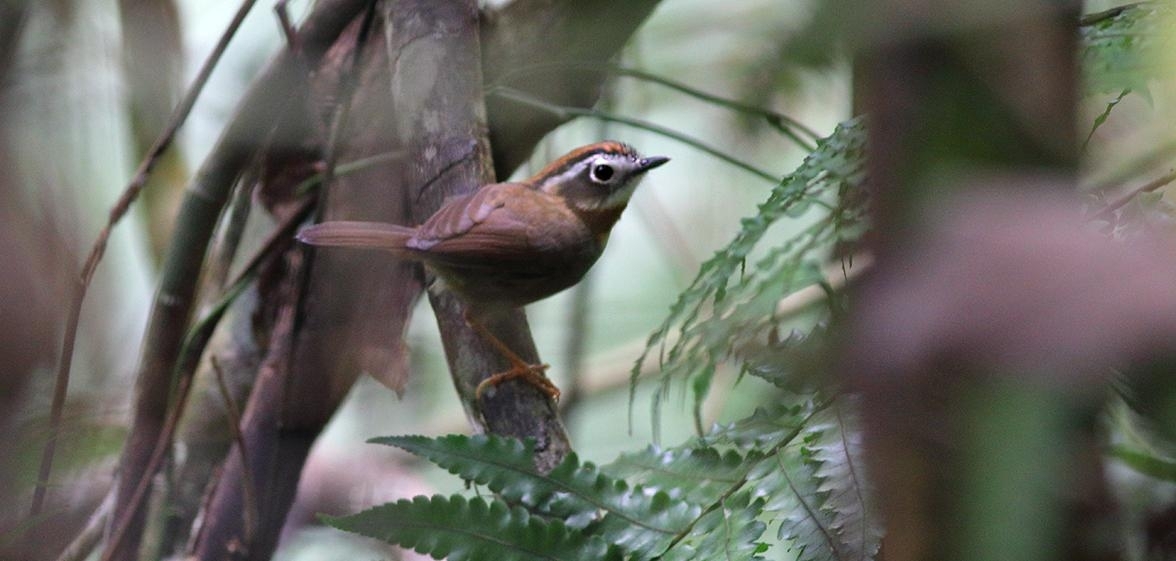
This is toughest of all Fulvettas in terms of sighting. More challenging the species to sight, better the experience for bird watchers. Take a look at the beautiful skulker Rufous-throated Fulvetta (image above) from the rain forest. It is important to note that, this species doesn't move in bigger flocks and often mixes up with other babbler species, thus for new comers it is tough to find out. Hopefully with the help of our expert guidance you will have a good sighting opportunity.
Diurnal and Nocturnal Birding:
In most of the other parks across North East India, birding activity is restricted to morning and afternoon sessions only. However, this forest is so promising that even in the darkness you can opt for one more evening birding session; where nocturnal bird species such as the Oriental Bay Owl, Spot-bellied Eagle Owl, Mountain Scops Owl etc are very likely to be sighted. Photographed below is one of the least photographed Owl from India - Oriental Bay Owl. Be a part of this tour and photograph these rarely seen owls. Those spots on the back and upperwing look spectacular!
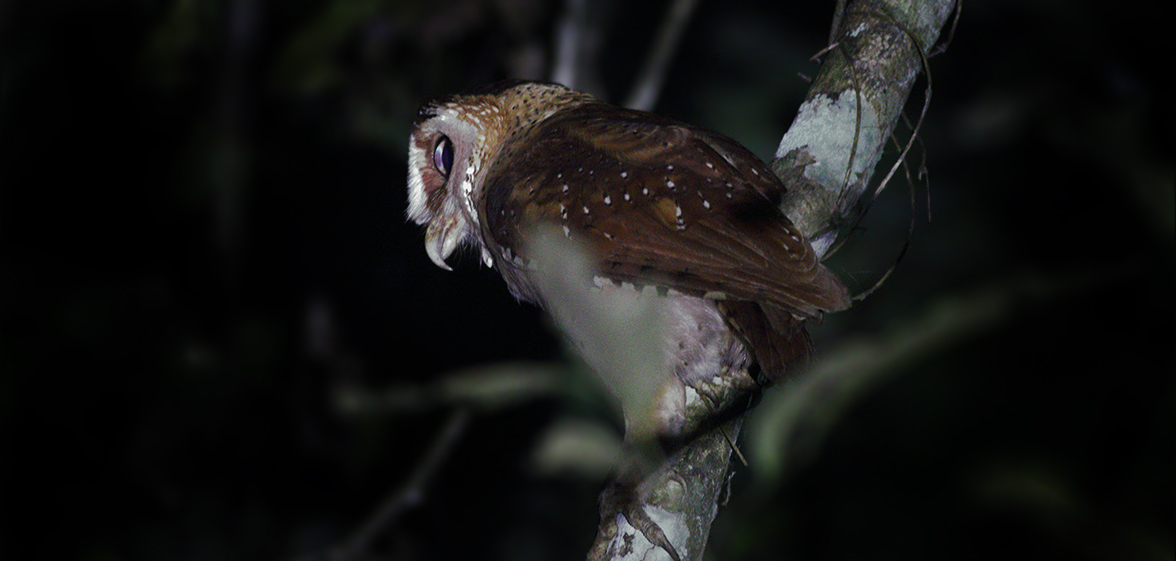
During the daytime you can expect to see Pale-capped Pigeon, Streaked Wren Babbler, Rufous-throated Fulvetta, White-hooded Babbler, Large Scimitar Babbler, White-winged Wood Duck, Brown Hornbill etc. To get an practical idea of birding, you should not fall for eutopian schemes and false promises made by many tour operators rather you can check bird checklist derieved on field from the month of April. This check list of birds along with the shared itinerary would be helpful in planning tours to Dehing Patkai. Take a look at the bird watching tour Trip Report Dehing Patkai April 2019 (<< Click on the link)
Additional notes:
.jpg)
It is a fact that probably you won’t be satisfied with just five days of birding in Dehing Patkai, yes, such is the beauty of North East India you will for more and more of it. Hey traveler, if you are traveling from Bangalore, Delhi, Mumbai or any other part of the country and are interested in exploring the lovely wildlife sanctuaries of Arunachal Pradesh, then certainly you have a plate full of options like :- Enthralling experience in Roing grassland, Mishmi will have you hooked, Mehao WLS will sweep you off your feet, Walong is a terrific idea, Dibru Saikhowa will make you crave for more and there are other places as well in North east India where we conduct our tours just so you can experience wildlife at its best. These places not only have unique diversity as regards flora and fauna but also can be regarded as a treasure trove of mother nature; the beautiful landscapes, the streams, the lofty snow clad mountains, cataracts, tranquility and everything great make these places the perfect holiday destinations. Based on your preferences and of course considering the season we can suggest you the best places to visit, so that you can make the most out of this tour.
During this park visit for few days, you can adjust your time and plan a visit to Digboi Oil Field for exclusive sighting of a laughingthrush species which is an elusive and totally amazing species the Chestnut-backed Laughingthrush (image above). From Indian subcontinent you will find this bird in Namdapha-Kamlang area also . Spend 2 hours and add a spectacular bird in your birding wishlist.
We can happily and proudly claim that our understanding of the forest of Dehing Patkai is the best in eastern India. If you want to go out and explore this magnificent jungle where elusive species of birds dwell and for sample itineraries with tour cost for group; please contact us at our mailing address :- support@goingwild.in
For more information on Dehing Patkai WLS and its tour related queries, you can take a look at FAQ section.
Be rest assured that you will return home with a camera full of great images and experiences to share with fellow bird photographers or bird watchers.We Hope to serve you again and again and again Happy birding!
0 Comments
Leave a comment
Archive
Tags
Latest Posts
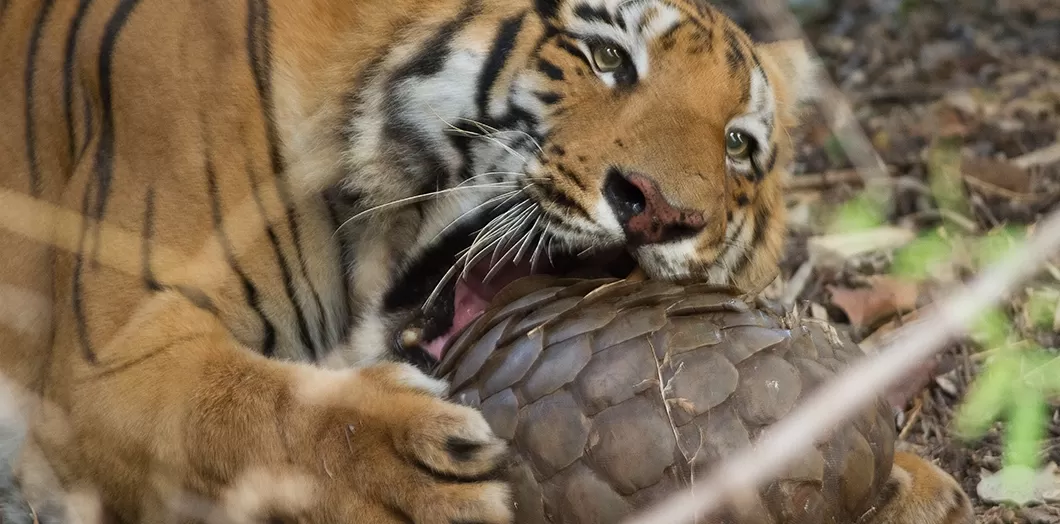
Tiger Pangolin Storyline From Tadoba
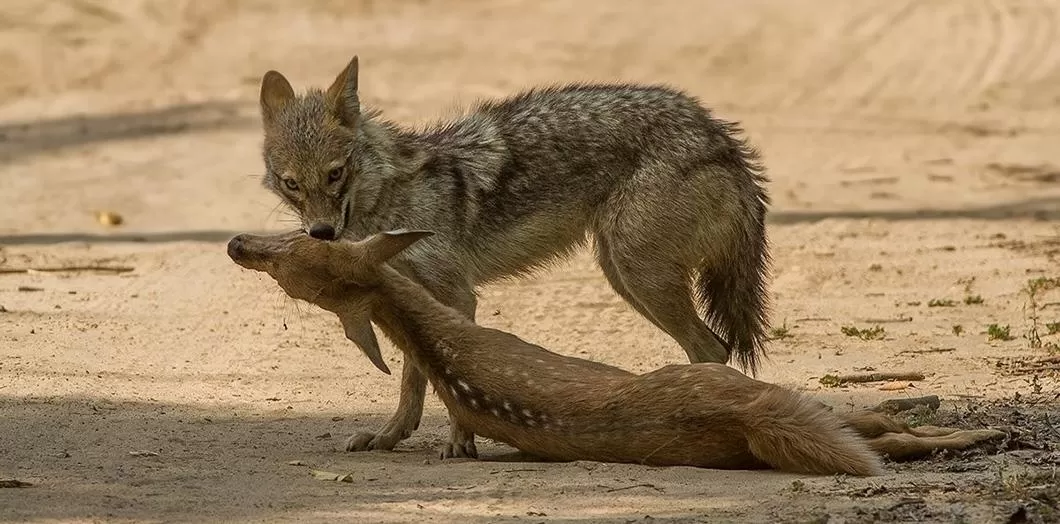
The Day of the Jackal
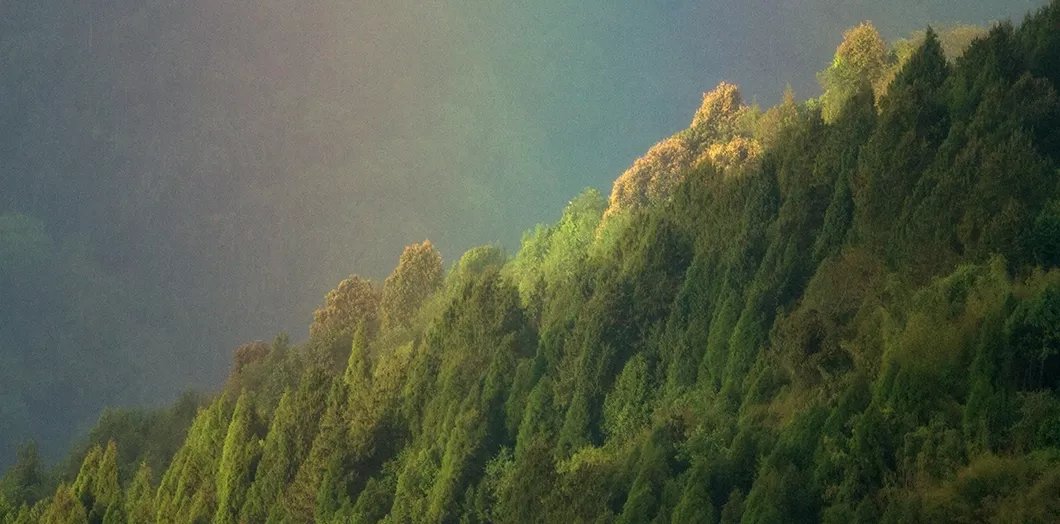
'Sikkim' Tour - Zuluk
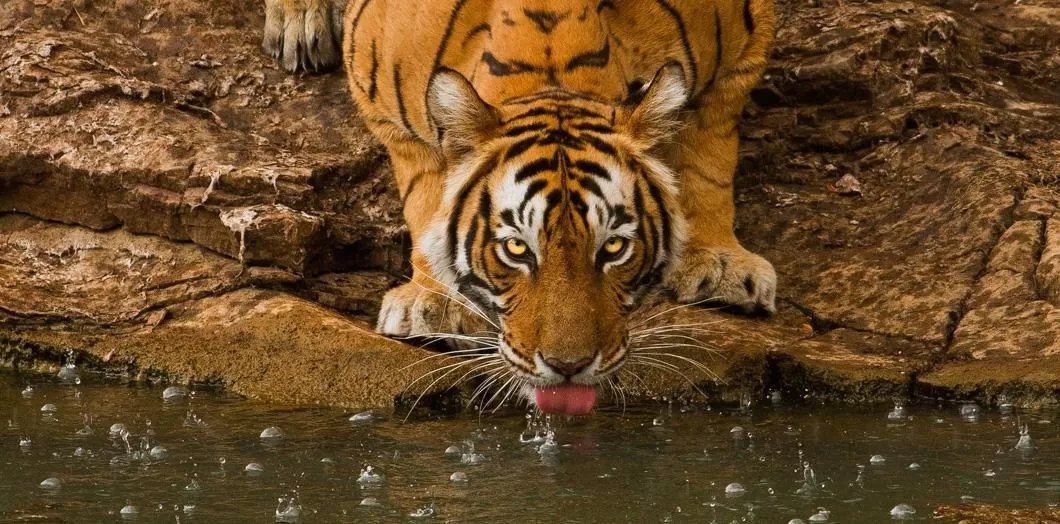
Tigress in Rain
